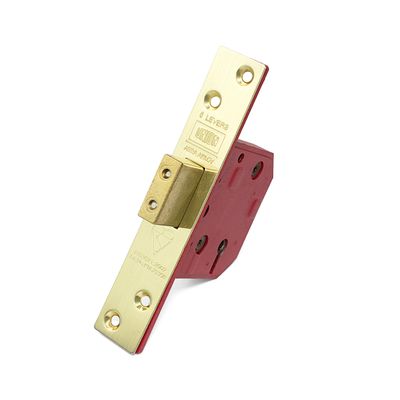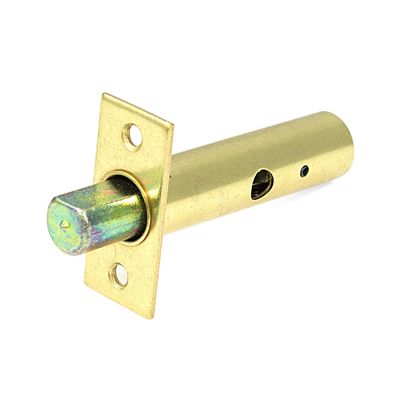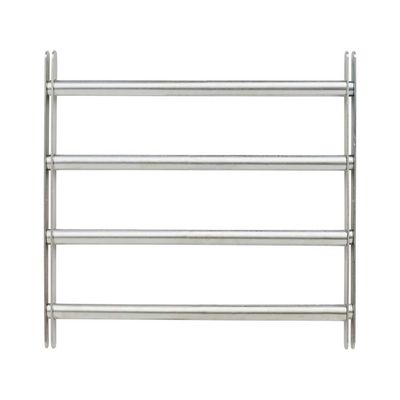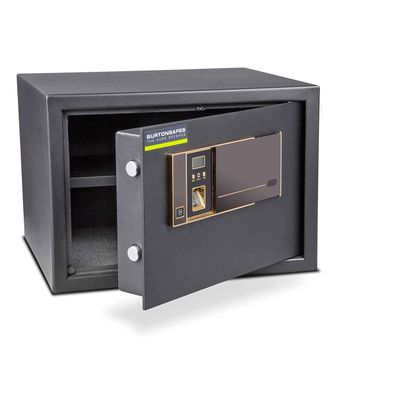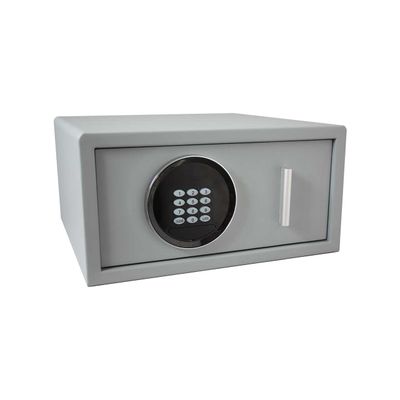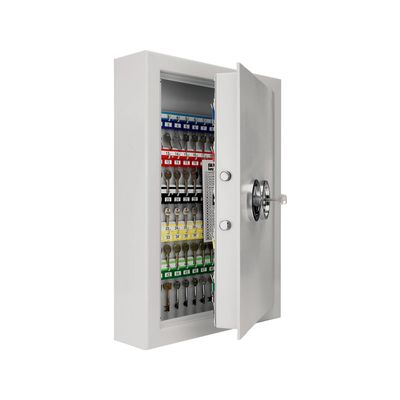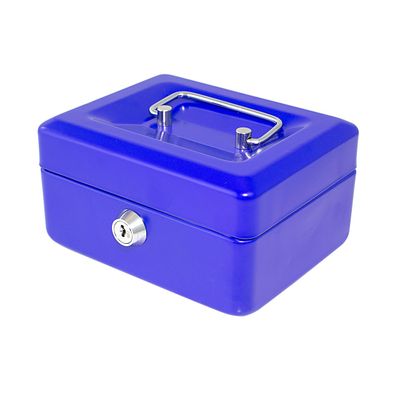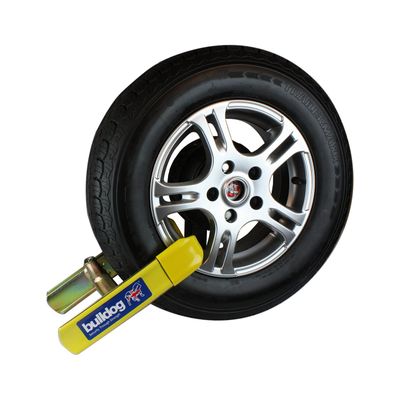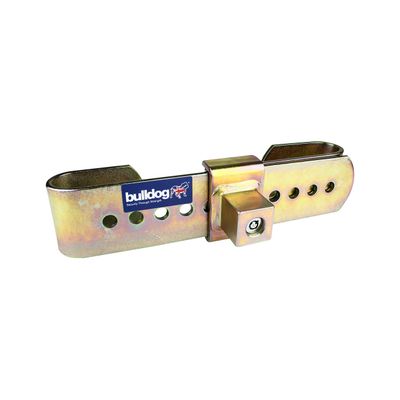Choosing Door Locks

- What material is your door made from?
- What type of door do you have? External, internal, communal etc...
- What level of security do you need?
- Are you fitting from new or are you replacing an existing lock?
Know what you need, Choose a Lock & skip ahead
Initial Considerations
What material is your door made from?
Wooden doors
Mostly use a rim nightlatch (often known as ‘Yale’ lock) and a mortice deadlock (often known as ‘Chubb’ lock).
Fringe cases exist when fitting to older doors as commonly they will have a much larger frame than the modern door. In these situations horizontal mortice locks exist to allow the key hole to be set further back from the edge of the door, and in turn be more in keeping with the era's style.
UPVC doors
Will use a multi-point locking mechanism and a compatable Euro cylinder.
Metal Doors
Use a range of different types of locks. The lock will be morticed into the door and will either be a standard sashlock, or it could utilise a multi-point sashlock, which operates top and bottom bolts by lifting the handle upwards.
What type of door do you have?
External
Wooden
require British Standard (BS3621) locks to be fitted on them for insurance purposes.
UPVC
have multi-point locking mechanisms which as long as they have 4 or more locking points will comply to most insurance requirements. (Check with home insurance policy as different policies vary)
Metal
require suitable dead/sashlock to meet insurance needs. Should be stated in most home insurance policies. Sometimes require additional internal locking bolts fitted top and bottom.
Communal
are doors which are used by more than 1 person in houses of multiple occupations (student accommodation or blocks of flats). You cannot have key locking dead/sashlocks on these doors due to the clear fire risks of people getting locked in the property.
Sliding Patio
can either take locks in the centre of the door and most of these take a small double euro cylinder that can be replaced (average size of these is 30-30mm). You can fit additional locks on these doors and they are patio door bolts fitted in the top and bottom corners of the door. These bolts stop the door from sliding and are an inexpensive and easy solution for locking if the central lock is broken.
Internal
Wooden (private home)
will be wooden and can take the standard 2 or 3 lever locks. Important to measure the amount of wood you have to fit to if the doors are glass panelled. Standard size would be 64mm for sashlocks. Additional bolts can be fitted, Yale internal mortice bolts are key locking and perfect for a discrete way of locking internal doors.
Wooden communal
require either a Rim nightlatch without a key locking internal handle or a mortice euro case (either a deadcase or sashcase) with a thumb-turn cylinder. This will give you the best level of security while still complying with the fire regulations.
UPVC communal
will only require you to change the cylinder for a Euro thumb-turn cylinder. The UPVC cylinders vary in size and need to be measured carefully so that you do not have to much length as this poses a security risk.
Cupboard & storage
can have locks fitted to them which use a standard pre-cut key. The Fire Brigade mortice locks which use a standard key available pre-cut so meter readers and emergency services carry them to gain access. The ERA budget locks are also a cheap and easy way of locking small cupboards or storage areas with out having to fit a large mortice lock.
What level of security do you need?
This is important as many homes have the incorrect lock types fitted on there doors and therefore do not comply with insurance companies requirements.
The easiest way to approach it is to have 5 Lever kitemarked B/S3621 locks fitted on all external doors, front and back, and key locking window locks on all windows.
Internal doors do not require locks on them but if you wish to lock them then a 2 or 3 lever will be adequate.
Please Note: One caveat is that the combination of a British Standard lock, to another, British Standard lock, i.e. a B/S euro cylinder within a B/S Mortice Lock, does not necessarily lead the unit complying to British Standards. This is a bit of a sticking point in the industry as although the 2 items are both British Standard, and together would probably well exceed current British Standard's, they were never tested together and as such cannot be given this classification. Therefore in theory they are not insurance approved. We have many ways of avoiding this issue, generally though it's easier to give us a call and run through your individual circumstances so we can find the appropriate solution.
Are you fitting from new or are you replacing an existing lock?
If you are fitting from new then you can choose any lock, so long as you have enough material to fit into. If you are replacing/upgrading your old lock, then measuring the lock correctly is essential, as this will limit the amount of fitting by reusing the existing fixing positions.
Different Types of Locks
Mortice Locks
5 Lever British Standard Mortice Locks
These locks are designed to be fitted on external doors and all are tested to meet insurance and police standards. The locks are certified with a kitemark which means they are tested to meet BS3621 standards. These locks have anti-pick key curtains, hardened steel anti-drill plates, box strike plate, 20mm bolt throw, hardened steel pins in the bolt to prevent sawing. These locks are designed to be amble security for external doors.
5 Lever Mortice Locks (Non British Standard)
These 5 lever locks are designed to replace 3 lever mortice locks. The bodies of these locks tend to be smaller that of British Standard versions, as they don't always have anti drill plates. Not suitable for external doors as these locks have not been tested to meet British Standard BS3621.
3 Lever locks
Designed for internal uses, not high security but will prevent entry into rooms. If fitted onto external doors you will need to remove and replace with a 5 Lever British standard lock.
2 lever locks
Only available in sashlock form we sell the Union 2295. Designed to be used on sheds and internal doors that do not require high security locks.
Sliding Door locks
These locks are designed for sliding doors to prevent the door from being pulled open. Often the locks will have a hook or a claw bolt. We sell a range of these locks from 3 lever low security claw bolts to high security 5 lever hook bolts. Important to make sure the door closes fully onto the frame as if there is too much of a gap then the hook / claw will not engage.
Horizontal Mortice Locks:
Often found on old Victorian doors, these locks were used to keep the knob handle far enough away to prevent the user hurting their knuckles on the frame. These locks are not suitable for external doors (on their own) as they do not meet the British Standard BS3621. Used on internal doors to replace the old Victorian style horizontal mortice locks.
Euro/Oval Profile lock cases:
These locks are used when you wish to use either a Euro cylinder or an Oval cylinder on your doors. The advantage of using a euro cylinder is you can key this lock alike to similar locks in your home or you can have a masterkey suite incorporating all your doors and padlocks.
Rim Nightlatches
British Standard Nightlatches:
These nightlatches are the most secure available, designed to meet or exceed the modern BS3621 standards. These locks auto-deadlock as soon as the door closes, they have a key locking internal handle, large strong strike plate and an anti-drill outside cylinder cover.
Auto-deadlocking Nightlatches:
These nightlatches are not tested to meet the British Standard requirements but do incorporate the auto-deadlocking feature which means as soon as the door is closed the latch is deadlocked into position to prevent burglars from 'slipping' the latch open. Most of these locks also come with a key locking internal handle.
Double locking nightlatch:
These locks are similar to the standard security nightlatches and don't offer a very high security level. They do have a double locking facility from the outside which must be done with the key. This extra turn of the key from outside will lock the latch into position, but it will also lock the internal handle as well. A s such these locks are not suitable for H.M.O's (house's of multiple occupation).
Standard Security Nightlatches
These are the lowest and most standard level of security nightlatches available. They have no additional security features and simply lock behind you when the door closes. Must be used with an additional 5 Lever British Standard Mortice deadlock to meet insurance requirements. These locks can be reversed to suit outward opening doors.
Euro Cylinders
Euro cylinders are suitable to replace UPVC door cylinders. These cylinders are available in different levels of security and quality. Many companies and brands sell these products but this is definitely a case of you pay for what you get. Many of the cheaper cylinders are poorly made and unreliable. You should always go for at least 6 pins which will give you a better protection against picking and manipulation. We sell zone 6 pin which we find a decent quality protection. The highest level of security we do is the ABUS Pfaffenhain range which is tested to British Standard and kitemarked.
Multi-point UPVC Mechanisms
These mechanisms are used on UPVC doors and there are lots of different styles and brands to choose from. The most secure multipoint locks are ones which have a central deadbolt and also operate with hooks and rollers. This will give excellent protection agains physical attacks.
The key to replacing these locks is to match your brand of lock and then measure the distances between the locking points.




